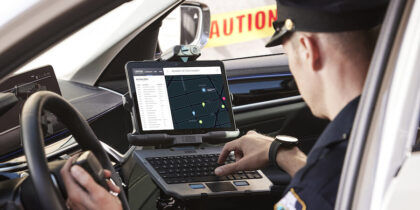Private firms and government agencies are looking to cloud computing with increasing interest. According to a 2014 report from PricewaterhouseCoopers, 55 percent of organizations worldwide currently use some form of cloud computing. That number is expected to grow as organizations look to increase productivity, reduce costs and support a growing number of endpoint devices. Within government environments, increased amounts of data and budget constraints are pushing agencies to implement cloud solutions in their operations. A cloud infrastructure can improve IT resource optimization and scale while safeguarding valuable data assets.
Cloud Computing Helps Government Agencies and the Public
When government organizations shift to cloud computing, they spend far less time and money on desktop support. Because business software is centralized, IT departments don’t have to conduct frequent maintenance at the endpoint device. By moving to the cloud, companies and government offices can improve service efficiency and reduce security threats.
Other benefits for cloud adoption include manageability and scalability. Some organizations choose to implement their own private cloud using desktop virtualization technology. Others choose service providers that offer a subscription-based buying model. Both of these models centralize desktop resources and simplify logistical problems such as patch management, rollouts of new application suites and operating system (OS) migrations. Because new software is applied only once in one place, IT departments don’t have the worry of using complex remote management tools to distribute changes over large networks. They simply apply changes at the server, and those become transparent to all authorized users.
When government agencies adopt cloud computing, the public prospers as well. Among the principal public benefits is that personal information is more easily secured behind firewalls and other safeguards. Data centralization and strict user permissions minimize exposure and restrict access only to authorized personnel. With technology that is less prone to security breaches, the public has greater peace of mind.
Cloud-Based Models
Converting a population of personal computers over to a private cloud requires a robust back end infrastructure with incremental hardware and software licensing costs. This transition can also take time, anchor down resources and create spikes in the budget. The end result, however, is a highly centralized computing environment that is easy to manage, monitor and keep secure. IT departments have greater control over a private cloud, as well as the flexibility to structure it to suit users’ specific needs. A private cloud is therefore ideal for user populations that require unique application sets, custom features or greater security controls.
Organizations that don’t have the resources to implement a private cloud of their own can opt for a third-party cloud service known as desktop-as-a-service, or DaaS. This removes a great deal of complexity from the transition process and spreads costs out over time. The trade-off is a lack of internal command and control. Leaving data protection entirely in the hands of a third party calls for a great deal of trust. For institutions that deal with highly sensitive information, the risk can sometimes be too high.
Many private firms and government agencies are likely to choose a combination of these two models depending on their specific needs. For example, a cloud service might be ideal for a holiday call center with seasonal employees that share a small set of very specific tasks. A private cloud might be better suited for the more dynamic job of marketing with changing needs for modern content creation tools.
Considering the End-Point Device
It is important to think of the end-point device as part of any cloud migration plan. Many organizations simply repurpose their existing computers as cloud access devices. This negates one of the main benefits of cloud computing because it nearly doubles the overall hardware and software footprint without removing that which is no longer needed. An investment in cloud technology can be maximized using ultra slim end-point devices that are optimized for consumption only. Such devices include tablets, Chromebooks, smartphones, thin clients and zero clients. These devices eliminate much of the overhead that is still left behind on a repurposed computer. With most of that overhead gone, centralized management and data protection become a reality like never before.
Samsung has developed a line of zero client endpoint devices designed specifically as cloud desktops. Samsung zero client technology replaces the typical desktop OS found running on a computer with a chipset designed solely for network communication. In essence, the clients use hardware-based intelligence to interact with a cloud environment. This approach not only reduces the desktop attack surface for greater network security, but it also increases performance while reducing power both consumption and heat dissipation. The end result is a simplified cloud access device that requires little or no administration, provides the highest level of desktop security and reduces both energy and cooling costs.
Looking to tap into the security and manageability benefits of cloud computing? Learn more about zero clients displays, desktops and other endpoint options.







